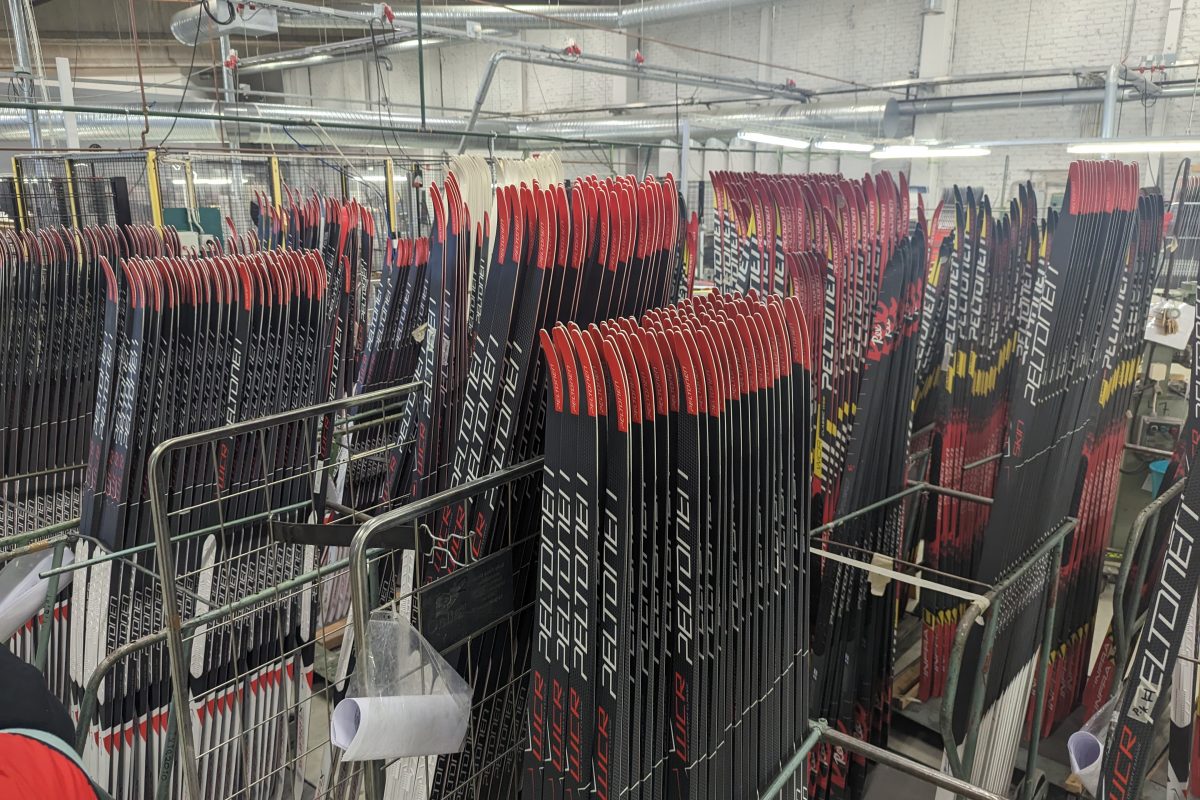
Dresden City Sprint World Cup – Torsten Püschel Interview
April 29, 2019
In the lead-up to the Minneapolis World Cup in March 2020, there are some parallels to the city sprint weekend in Dresden, Germany. Both are urban events relatively new to the World Cup circuit.
What are the motivations and goals behind hosting a World Cup? What does it take to get a new event on the calendar? What has the Dresden World Cup learned and how is the event changing after the first two years of their five-year contract?
Garrott Kussy spoke with Torsten Püschel, Co-Founder and Co-Director of the Dresden World Cup, to learn more about hosting a city sprint World Cup. Püschel grew up in Dresden as an elite athlete when the city was part of East Germany. He has spent the past 20 years working as a sports commentator for German television and radio, including the past six Olympic Games.
Launching a World Cup City Sprint: “Bring Skiing to the People”
Garrott Kuzzy: What was your inspiration for bringing a World Cup event to Dresden?
Torsten Püschel: First and foremost, because Dresden is my home. My co-founder (René Kindermann, also a German television sports commentator) and I are enthusiastic fans of our hometown. In 2014, the Mayor of Dresden, Helma Orosz, came to us and said: ‘Torsten & René, you both travel the world for sporting events. Do you have any ideas for promoting the city in the winter?’ Dresden is known for the Striezelmarkt, Germany’s oldest Christmas Market, in December. In the spring and summer, it is full of cyclists and travelers. But things were a little quiet in January.

(Photo: Dresden World Cup)
René and I were announcing at the World Cup in Lahti, Finland, where the nordic venue is within walking distance of the city. We thought, ‘Hey, how about we host a nordic World Cup in Dresden?’
We had conversations for over a year with all possible constituents before announcing our idea. We didn’t want anyone to feel left out. This was one of the keys to the success of the event.
The regional ski clubs loved the idea of bringing the World Cup to the people in the city, rather than bringing people to a more remote ski area in the Iron Mountains (Erzgebirge mountain range about 50 miles from Dresden, on the border with the Czech Republic). That also fits with the German Ski Federation’s mission to bring more winter sports to the cities.

(Photo: Garrott Kuzzy / LumiExperiences.com)
GK: Once you decided you wanted to host a World Cup, how did you make it happen? What were the challenges?
TP: There were three big challenges. First, we had to find a weekend that fit into the FIS calendar. Second, we had to get all of the permits from the city. There were over 10 different departments who had to sign off on our proposal. Finally, we had to achieve the FIS requirements like organizing accommodation, paying for athlete’s travel expenses and, of course, to build a venue in the city. It took over three years from having the idea in fall of 2014 to approval by FIS in May 2017, to actually hosting the event in January 2018.
GK: You mentioned that Dresden is known for its cycling. Rock climbers are also likely familiar with the famous sandstone Bastei rock formations. Cross country skiing is not as synonymous with the region. What are winters like in Dresden?
TP: Dresden itself is cold, but does not always have snow in the winter. Instead, people typically travel around 45 minutes into the surrounding Erzgebirge mountains to ski. Rather than make people travel to snow, our inspiration was to bring the World Cup to the people.
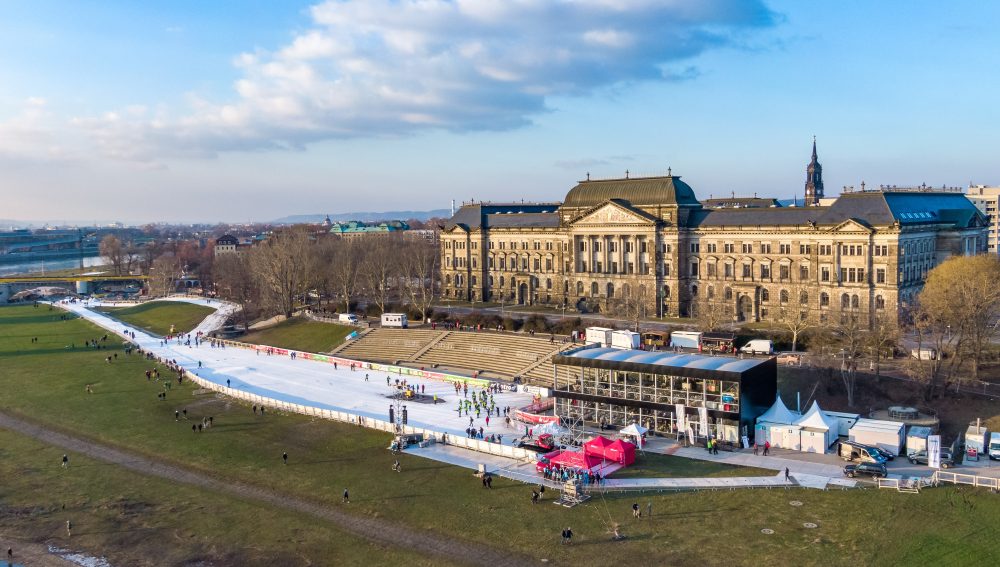
(Photo: Dresden World Cup)
Creating a Sustainable Event
GK: Has it been hard hosting a World Cup in a city without consistent snow? Are you taking into account environmental concerns?
TP: Creating an environmentally sustainable World Cup has actually been one of the most interesting parts of the project. From the beginning, we wanted to make sure the event was ‘green’–in the environmental sense at least. FIS actually has a Green Event Manual. We used the manual, along with the input from several local, environmentally focused non-profits, to make the event as sustainable as possible.
For example, it is actually better to host a city event than a rural event in the mountains because everything is so central. The athlete hotel is located right next to the course, so racers and coaches can walk to the venue. Tickets for spectators include public transportation.
FIS now requires that every World Cup venue has snowmaking, so every event is making snow–not just city sprints. We make our snow at the Dresden Airport with non-potable water collected from the roof of the airport. Snow guns make the snow inside an airport hanger, so no moisture is lost to wind or sun. The energy used to make the snow is 100% renewable; from hydro, solar and wind power.
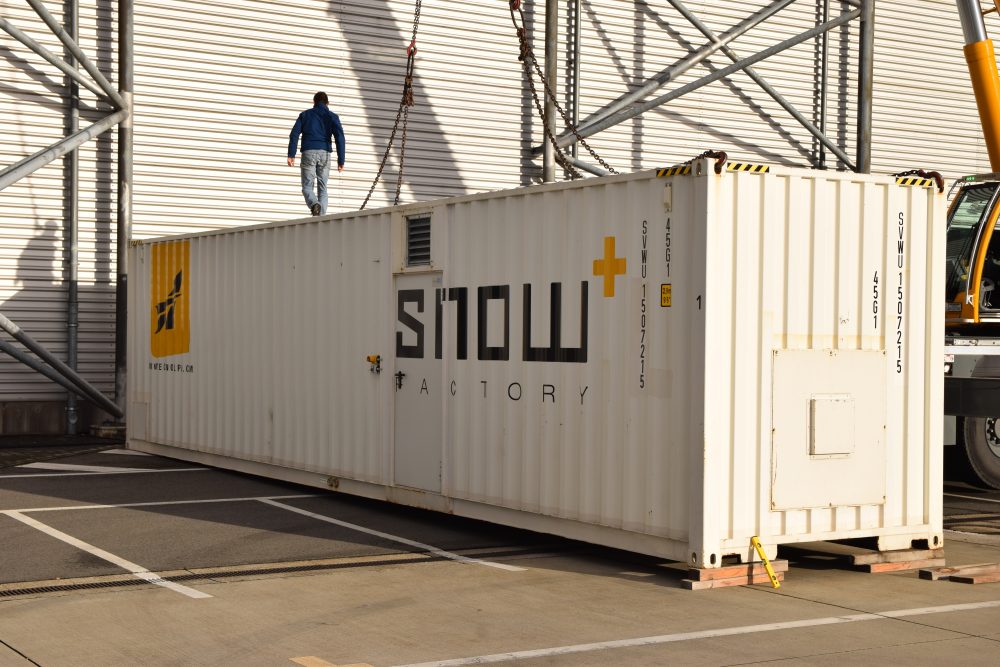
(Photo: Dresden World Cup)
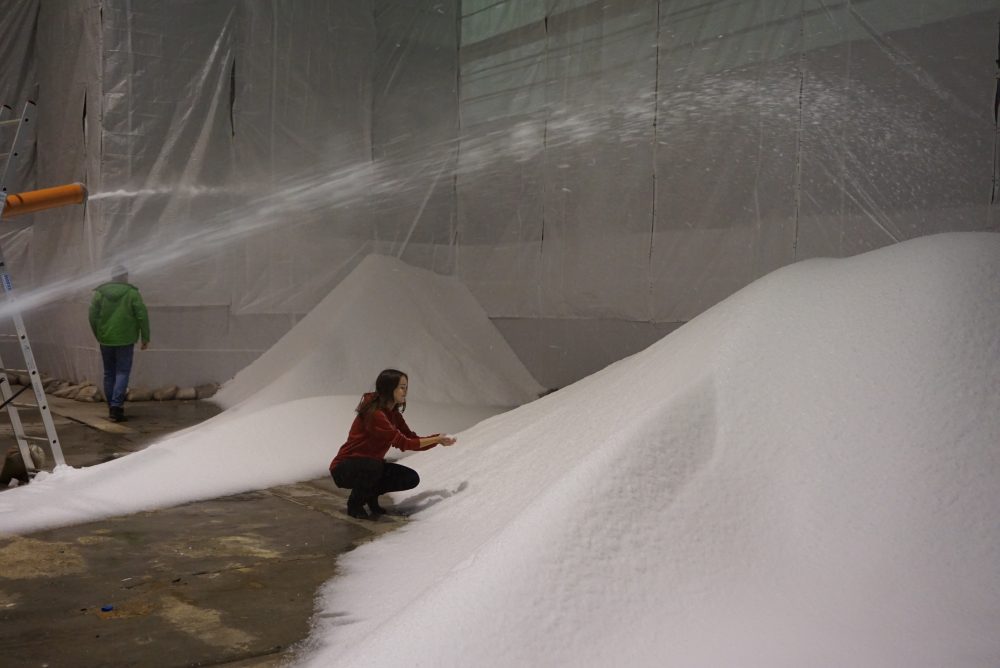
(Photo: Dresden World Cup)
It takes about a month to make all the snow for the event, which we can even make in temperatures above freezing. Two days before the event, we transfer the snow from the airport to the venue. A short 650m snow loop has several advantages. First, it means we do not need to make much snow. Second, racers ski two laps, which is more exciting for spectators. On the team-sprint day, racers ski past the spectators 72 times–more than any other World Cup event.
The total carbon required for our snow production is about the same as one person in Dresden would use in two months of normal living.
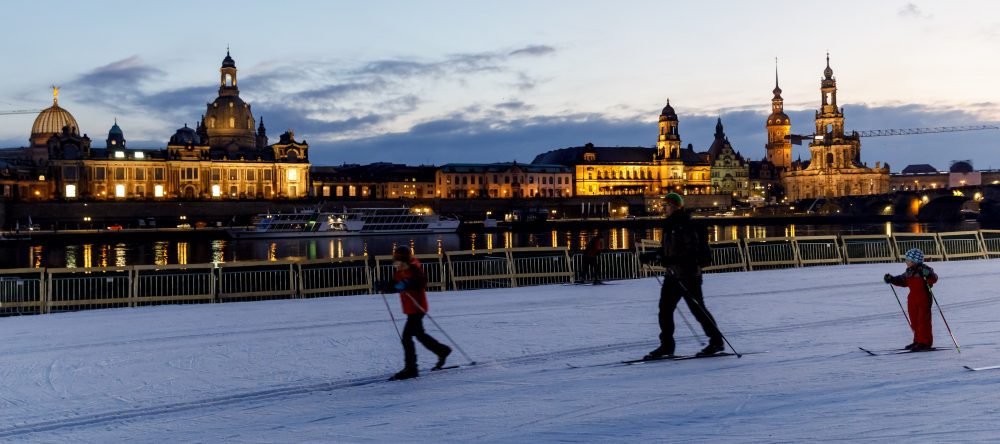
(Photo: Dresden World Cup)
A Family Winter Weekend
GK: In Minneapolis, the race organizers are creating a four-day festival around the World Cup. How do you use the snow when World Cup racers aren’t racing?
TP: One of our goals is to help put Dresden on the world stage. The course runs along the banks of the Elbe River with the city skyline in the background. Of course, promoting the city and sport is a big part of our event.
As part of bringing skiing to the people, we leave the course set-up for 10 days. After the race weekend, we open the track to everyone. Elementary school kids come during the week to learn to ski. Tobias Angerer (Olympic Bronze Medalist and two-time World Cup Overall Champion) has connections to Dresden and spends the week teaching lessons. The German National Paralympic team teaches skiing to people with disabilities. A junior championship event brings over 450 kids for sprint races. We also host an event for the Special Olympics. The hill is used for sledding. The VIP hospitality ‘tent,’ which is actually a beautiful, temporary, two-story glass building, is perfect for companies to host team-building events, which is used for all 10 days as well.
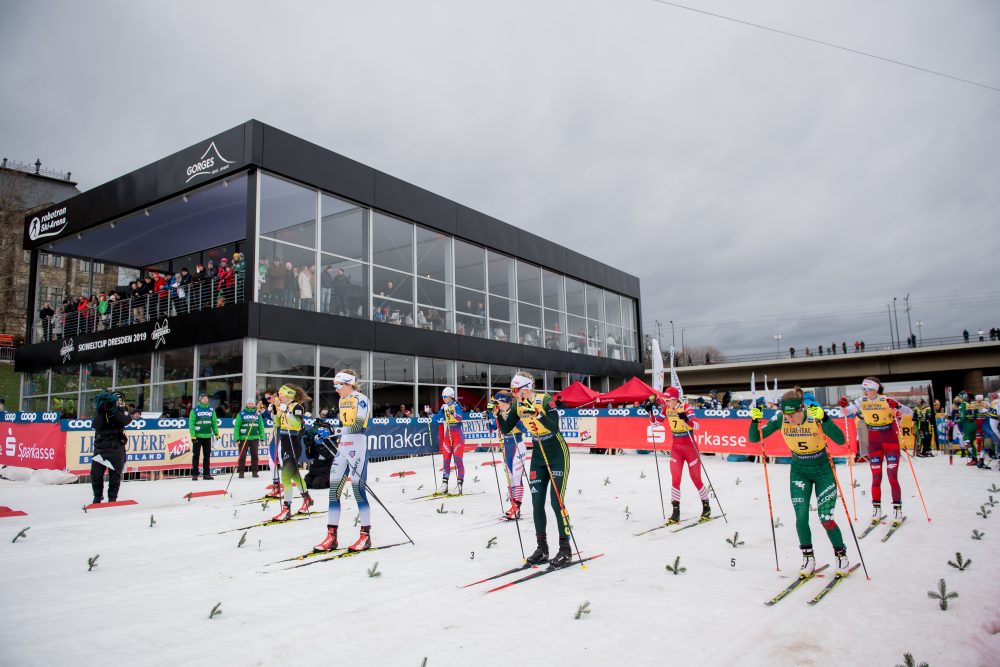
(Photo: Dresden World Cup)
Looking toward the future
GK: After two years, what have you learned? How will you evolve as you move forward?
TP: For the event, we will continue to add activities. For example, we will have a sponsor village next year, where people can sample Gruyère cheese, or try laser biathlon. We will also lower the ticket prices, aiming for cinema pricing–where spectators can access the event for the same price as a movie ticket. We really want this to become a family winter weekend.
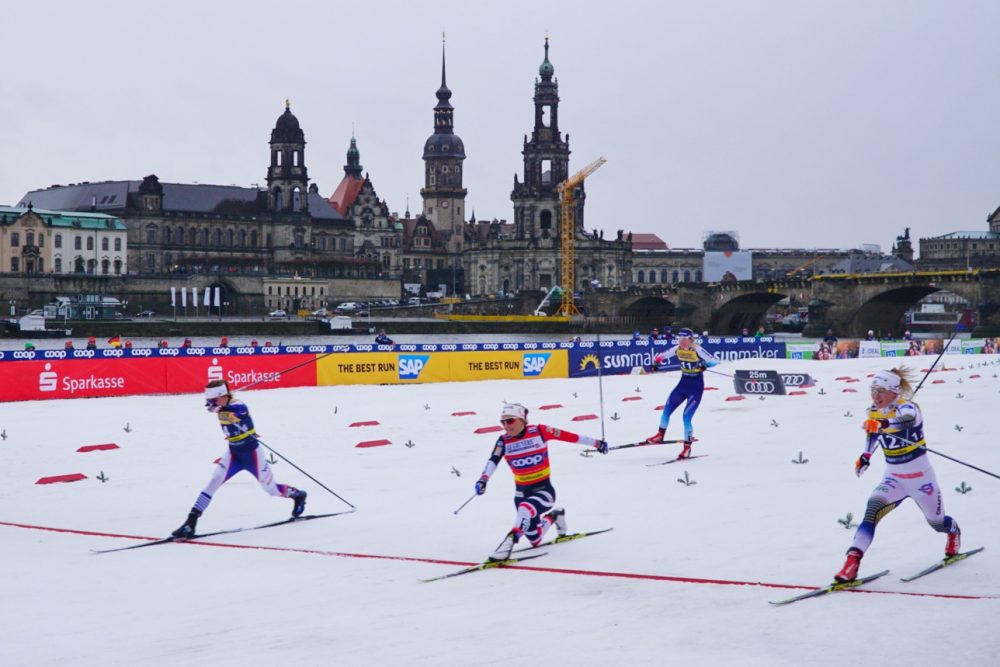
(Photo: Garrott Kuzzy / LumiExperiences.com)
GK: What is the athlete perspective of the event?
TP: Athletes have appreciated how firm and fast the course was; and how well the conditions held. That was very positive feedback. They also appreciate being able to walk, or run, from their hotel to the course.
Regarding the loop itself, the qualifying times were slower than FIS wants, so we are shortening the course by about 200m and making the whole venue more compact–which also improves spectating. We are reversing the direction of the course, putting the uphill at the beginning to try spreading out the field more. We are also adding more berms and bumps to make the course more challenging for athletes and exciting for spectators.
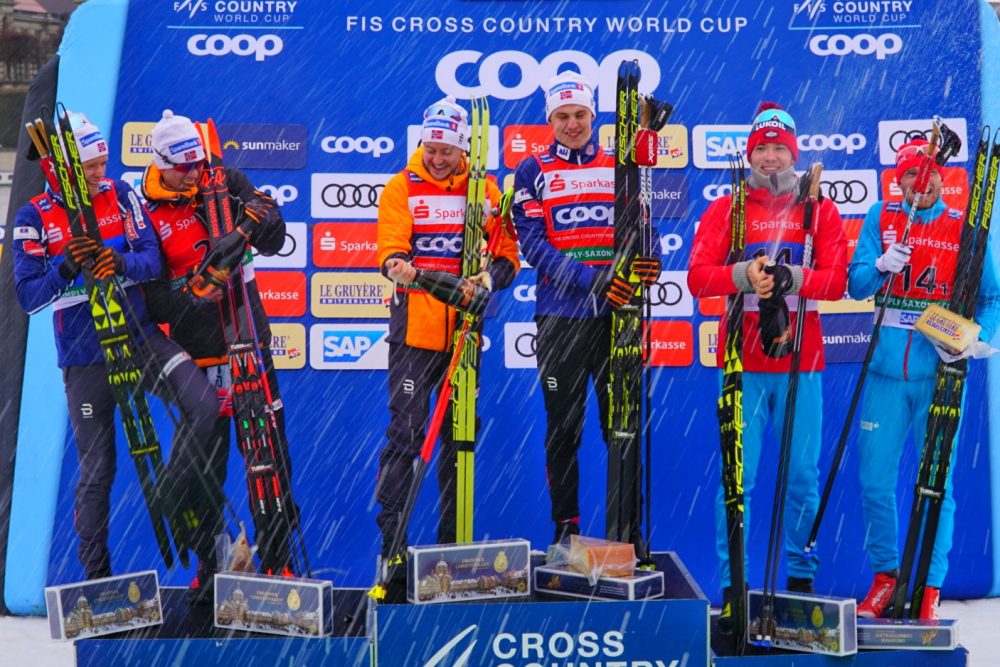
(Photo: Garrott Kuzzy / LumiExperiences.com)
GK: Why should someone travel to Dresden for the World Cup?
TP: There are several reasons. First, the event is quickly becoming a tradition in Dresden. The local community is excited to host the event. People are very friendly excited to host an international event and spectators. Second, everything is within walking distance. It’s special to be able to experience the World Cup during the day and the city of Dresden, including their restaurants and culture at night. Most importantly, the event is a lot of fun. There is an opportunity to interact with some of the best skiers in the world and watch them compete on one of the most iconic World Cup courses in front of the city skyline.
GK: Thank you, Torsten. Good luck as you prepare for the World Cup next winter.
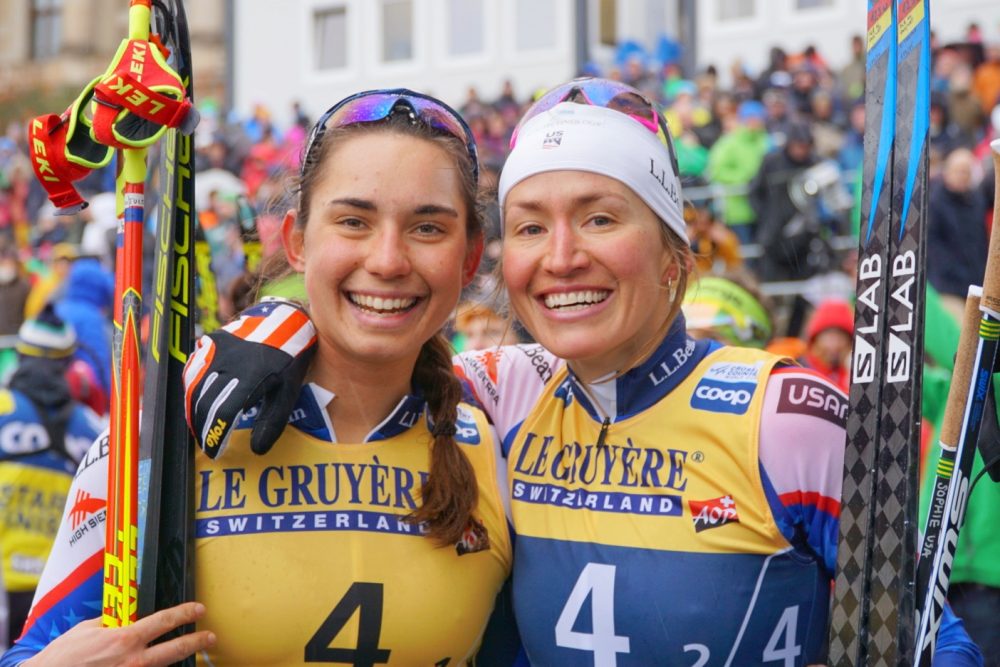
(Photo: Garrott Kuzzy / LumiExperiences.com)
About Garrott Kuzzy
Garrott competed in the 2010 Olympic Games and raced several years with the US Ski Team and the CXC Team. He is the founder of Lumi Experiences, specializing in cross-country ski vacations. Lumi Experiences is offering a trip “Dresden to the Dolomites” with VIP tickets to the Dresden World Cup and the opportunity to ski the Dolomitenlauf Worldloppet Ski Marathon in Austria.
Jason Albert
Jason lives in Bend, Ore., and can often be seen chasing his two boys around town. He’s a self-proclaimed audio geek. That all started back in the early 1990s when he convinced a naive public radio editor he should report a story from Alaska’s, Ruth Gorge. Now, Jason’s common companion is his field-recording gear.



